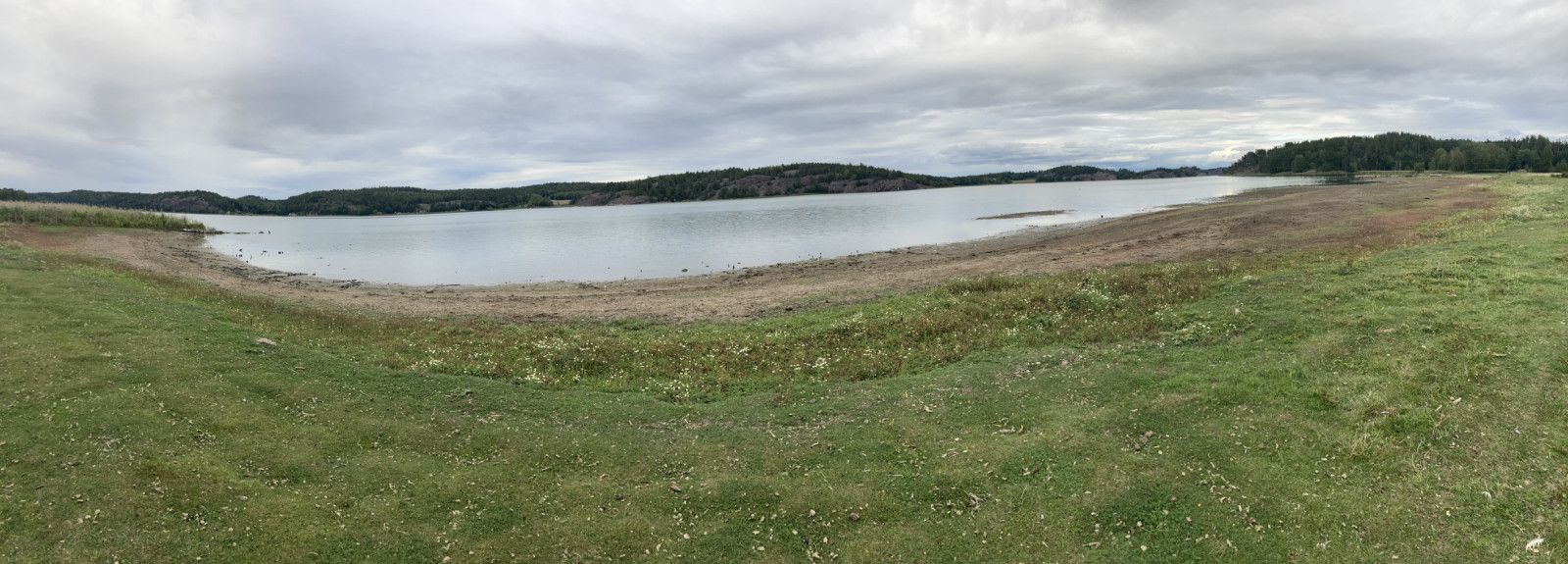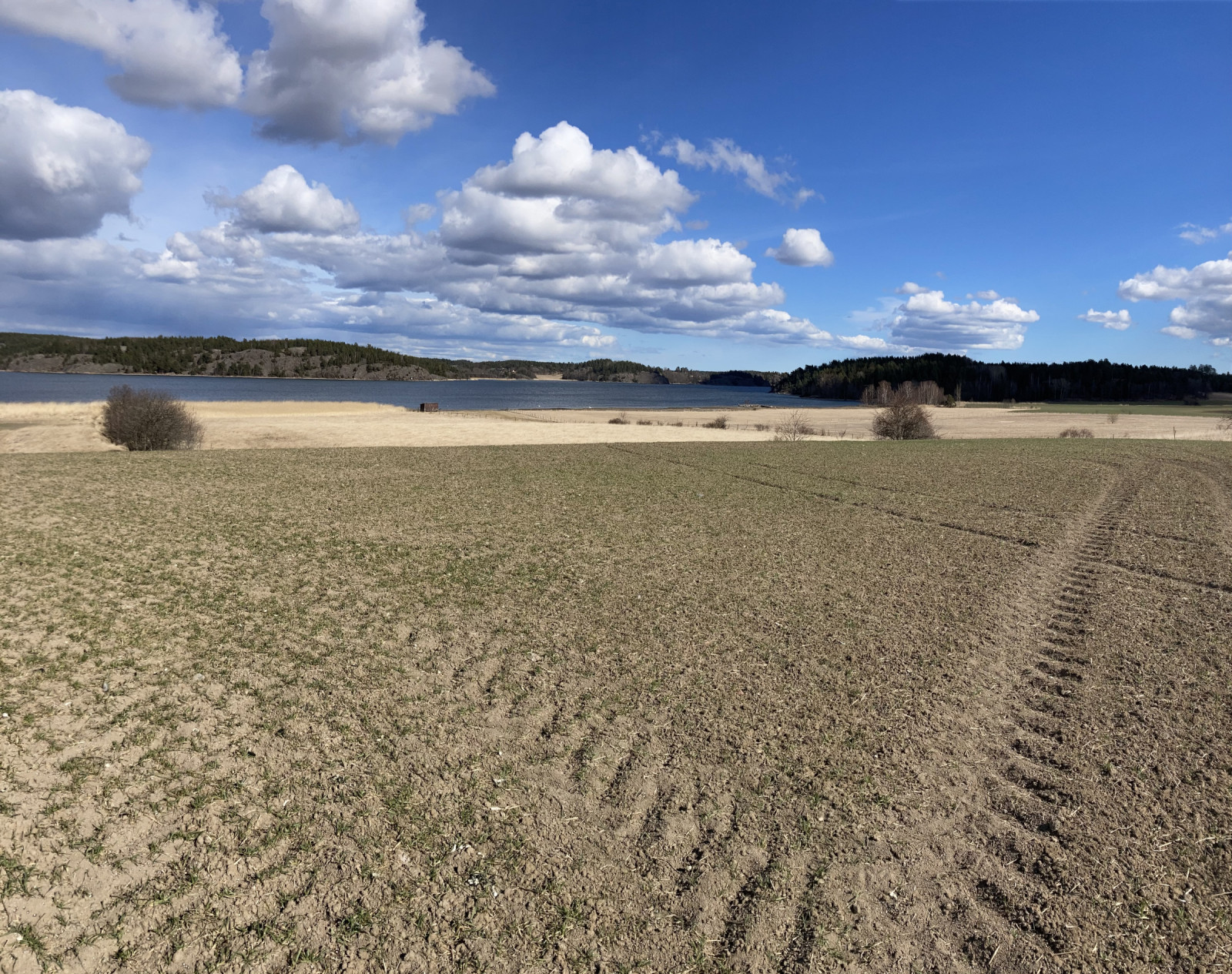Charger images
Les formats d'image autorisés sont de type jpeg, png ou gif
La taille maximale du fichier doit être de 20MB



The area around Killingholmen is a scenic area where the river Storån meets the narrow bay Slätbaken. Around Hov you can find open coastal meadows.
The birds start to arrive at Killingholmen in February when the ice starts to loose its grip on the coastal waters. Then ducks start to rest in the shallow parts of the bay; Fuligule morillon (at most 100) and around 1000 Harle bièvre can be found. Also the rarer winter ducks like Sarcelle d'hiver, Fuligule milouin, Harle piette, Fuligule milouinan and Harle huppé. A few hundred geese and around 100 Cygne chanteur feed on the areas fields and coastal meadows around march. In March the other early spring birds also arrive; Alouette des champs, Pigeon ramier, Étourneau sansonnet and Vanneau huppé. In spring you can find Panure à moustaches in the reed beds.
Year round Épervier d'Europe, Pygargue à queue blanche and Buse variable are the common predatory birds. But Aigle royal, Busard Saint-Martin and Milan royal pass by the area. Most common passerine birds arrive in March/April. Slätbaken is a stopping point for passerine birds, which makes it common to find uncommonly early Alouette lulu and Grive draine.
From late February and in March the owls in the area can be heard calling. Chouette hulotte Chevêchette d'Europe and Grand-duc d'Europe are sometimes heard. In March more geese start to arrive and not only the common Bernache du Canada and Oie cendrée. Also Oie rieuse (at most 67) and Bernache nonnette (at most 100). Oie des moissons, Oie de la toundra and Oie à bec court are sometimes found. Also Cygne de Bewick has been observed.
On the coastal meadows large amounts of passerine bird start to rest in the end of March and in April. Pipit farlouse, Bergeronnette grise, Linotte mélodieuse are the most common. Among these Pipit maritime is regularly seen. In the large grassy areas Hibou des marais can be found. On the coastal meadows Chevalier guignette, Chevalier culblanc, Chevalier gambette, Canard siffleur, Canard chipeau, Canard souchet, Chevalier sylvain, Pluvier doré, Bécassine des marais and Grèbe huppé. Most common dabbling ducks are found but only Sarcelle d'hiver is numerous (at most 70). At the Torpa damm Sarcelle d'été and Canard pilet have been seen, along with smaller amounts of other ducks.
In april large amounts of thrushes move past the fields and coastal meadows. Hundreds of Grive musicienne, Grive mauvis, Grive litorne and Grive draine are seen. In the end of May and April most birds disappear, except for the breeders.
In May the latest passerine birds, and night active birds arrive. On the fields Busard cendré, Faucon pèlerin and Râle des genêts are found. Goéland brun sometimes rest on the coastal meadows in May. Roselin cramoisi often sings here. On the meadows Bernache nonnette, Oie cendrée, Bernache du Canada, Canard chipeau, Chevalier gambette, Vanneau huppé, Grèbe huppé, Fuligule morillon, Garrot à oeil d'or and Foulque macroule breed. In the area Pic épeichette, Pie-grièche écorcheur, Sarcelle d'hiver and Cygne chanteur breed. At Storåns river mouth you can observe Martin-pêcheur d'Europe.
During autumn Hov strandängar becomes better for birding. From July the area is a good site for wading birds such as Vanneau huppé, Courlis cendré, Grand Gravelot, Petit Gravelot, Chevalier guignette, Bécassine des marais, Pluvier doré, Chevalier aboyeur, Chevalier gambette, Combattant varié, Chevalier sylvain and Chevalier culblanc. These are all common, while Bécasseau minute, Bécasseau variable, Courlis corlieu, Bécasseau de Temminck and Bécasseau cocorli are more rare.
Other wetland birds are often found. Among the rarer birds Martin-pêcheur d'Europe, Sterne caspienne, Gorgebleue à miroir and Grande Aigrette can be noted. Large amounts of gulls, geese and terns can be found, especially Oie cendrée which some years have been found as numerous as 3000.
Large amounts of passerine birds are found in the meadow areas. The most numerous passerine birds are Chardonneret élégant (250 at most), Hirondelle rustique (500 at most), Tarier des prés, Traquet motteux, Étourneau sansonnet (600 at most). Later in autumn Grèbe castagneux, Bécassine sourde, Linotte à bec jaune, Grèbe esclavon, Harle piette and Fuligule milouinan are sometimes found.
Inre Slätbaken is located east of the town of Söderköping. Parking can be found around Hov and several other places. Click on a P in the map for directions to a parking spot.
Votre feedback sera transmis à l’auteur.rice de cette zone et à l’équipe éditoriale de Birdingplaces, qui l’utiliseront pour améliorer la qualité des informations. (Vous souhaitez publier un commentaire visible en bas de page ? Fermez cette fenêtre et choisissez l’Option 1 : « Publier un commentaire, un conseil ou une observation ».)
Veuillez fournir des suggestions d'améliorations ou d'ajouts au texte de ce site ornithologique.
Veuillez fournir vos suggestions d'améliorations ou d'ajouts à la carte.
Veuillez fournir des suggestions d'améliorations ou d'ajouts à la liste des oiseaux.
Cliquez sur l'icône de l'oiseau () Insérez les noms d'oiseau dans votre langue. Ils seront automatiquement traduits pour les autres usagers !